A Guide to Home Equity Loans, HELOCs, and Cash-Out Refinancing
< Back to Articles | Time to Read: 5 minutes
If you're a homeowner who has been living in the same home for a few years, you may be sitting on a substantial amount of equity. How can you access this equity and put it to good use? The answer is a 3-parter: home equity loans, HELOCs, and cash-out refinances.
Each of these financial tools has its own set of guidelines, requirements, advantages, and risks. Let's break them down so you can make an informed decision!
What Is Equity?
Home equity is the part of your home's value that you actually own, which is your home's market value minus any mortgage you owe. For example, if your home is worth $300,000 and you owe $100,000 on your mortgage, your home equity is $200,000.
Why Homeowners Tap into Equity
Earlier this year, we hoped inflation would keep dropping, and interest rates would soon follow. However, by mid-year, inflation has only slightly decreased, and the Federal Reserve kept interest rates at a 23-year high. This means credit card and personal loan rates are still high. A home equity loan, with its lower interest rate, could be used to pay off higher-interest debts and save money, giving you some financial relief until the economy improves.
For others, tapping into home equity provides a safety net for unexpected expenses such as medical bills, major car repairs, or other emergencies. Access to funds can provide peace of mind, knowing you have a financial cushion for unforeseen events.
While tapping into home equity can provide financial flexibility, it's important to use it wisely. One of the best uses for home equity includes investing in home improvements that offer a high return on investment (ROI), such as kitchen and bathroom remodels, which enhance your living space and add significant value to your home.
Home equity can also be used to cover education costs for yourself or your children, providing an alternative to student loans, which often have high interest rates. Now, let's dive into the three main types of home equity products and how they work!
What Is a Home Equity Loan?
A home equity loan, often called a second mortgage, lets you borrow a lump sum of money against the equity you've built up in your home. Equity is the difference between your home's current market value and the amount you still owe on your mortgage.
The primary advantage of a home equity loan is that it comes with fixed interest rates, making your payments predictable and easier to budget. Plus, you receive a large amount of money upfront, which can be useful for big expenses like home renovations or paying off high-interest debt. Another benefit is that the interest may be tax-deductible if used for home improvements.
If you need a small amount of cash, home equity loans are usually not the answer. Though some lenders will dish out $10,000, many will not give you a loan of less than $35,000.
Remember that a home equity loan means taking on another mortgage payment in addition to your existing one. The closing costs can be similar to what you paid when you first bought your home (with processing fees, origination fees, etc.), and if you fail to repay, you risk foreclosure and losing your home.
Home Equity Loan Guidelines/Requirements:
- You typically need to have at least 15-20% equity in your home.
- Most lenders require a credit score of at least 620.
- Your total monthly debt payments, including the new loan, should be less than 43% of your monthly income.
- An appraisal of your home is usually necessary to determine its current market value.
- Often come with a loan term of 5, 10, or 15 years.
What Is a Home Equity Line of Credit (HELOC)?
A Home Equity Line of Credit, or HELOC, is a revolving line of credit, similar to a credit card, that allows you to borrow against your home's equity up to a certain credit limit. Most HELOC lenders let you borrow up to 80% of your home's value, minus what you still owe. Unlike a home equity loan, which immediately gives you a lump sum of cash, a HELOC allows you to withdraw money as needed.
The main advantage of a HELOC is its flexibility. You can withdraw and repay funds as needed during the draw period, typically lasting 10 years. During this period, you only need to pay interest on the amount borrowed, not the principal (though you may have the option to make extra payments toward the principal). This is great if you need quick cash for an emergency, job loss, or a large medical bill.
On the downside, HELOCs come with variable interest rates, meaning your monthly payments can increase if interest rates go up. Easy access to funds might tempt you to borrow more than you can repay, and after the draw period, you enter the repayment period, during which both interest and principal payments are required, sometimes nearly doubling your monthly expenses.
HELOC Guidelines/Requirements:
- You typically need to have at least 15-20% equity in your home.
- Typically, a score of 620 or higher is required.
- Your debt-to-income ratio should be below 43%.
- A home appraisal is needed to assess the value of your property.
What Is a Cash-Out Refinance?
A cash-out refinance involves replacing your existing mortgage with a new one that's larger than the amount you owe. You receive the difference as cash you can use for home improvements, debt consolidation, and more.
The advantage of a cash-out refinance is that, since it's a primary mortgage (not a second one), interest rates can be lower than home equity loans or HELOCs. It combines your mortgage and cash-out amount into one monthly payment, and the interest on the mortgage may be tax-deductible if the funds are used for home improvements.
However, your mortgage payment could increase if you take out a significantly larger loan, and the closing costs can be as high as what you paid when you initially bought your home. As with any mortgage, failing to make payments can result in losing your home.
Cash-Out Refinance Guidelines/Requirements:
- Typically, you need to retain at least 20% equity in your home post-refinance.
- A score of at least 620 is usually required, but higher scores get better rates.
- Your debt-to-income ratio should be less than 50%, generally.
- A new appraisal is necessary to determine your home's current market value.
Other Uses for Home Equity
Some homeowners use their equity to invest in rental properties or vacation homes. This can create an additional income stream, helping to build long-term wealth. Others choose to use their equity to start or expand a business, providing the necessary capital for growth.
Home equity can also be used for major purchases such as a new car, boat, or other high-cost items that might otherwise require high-interest financing. Major life events (weddings, honeymoons, etc.) or dream vacations can be made more affordable using your home's equity.
Which Is Right for You?
Choosing between a home equity loan, HELOC, and cash-out refinance depends on your financial situation and needs. Before deciding, consider your financial goals, ability to repay, and comfort with potential risks.
Tapping into your home's equity can be a powerful tool, but it's essential to use it wisely to avoid financial pitfalls. Since your home is used as collateral, there is always a risk of foreclosure if you're unable to pay back the funds. So, consult a financial advisor or mortgage professional for personalized guidance!





